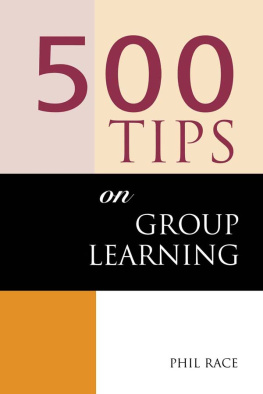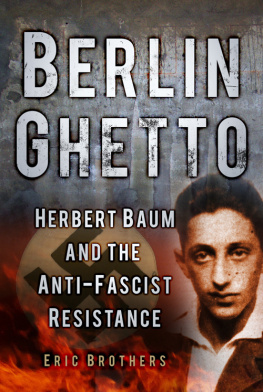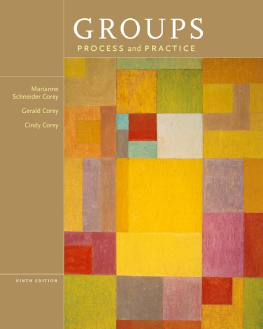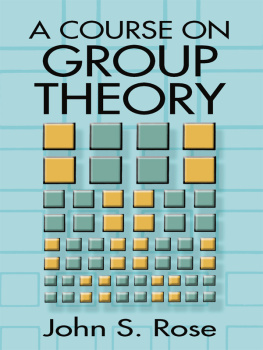The Anti-Group
The anti-group is a major addition to the theory and practice of group psychotherapy and applied group work. It comprises the negative, disruptive elements, which threaten to undermine and even destroy the group but, when contained, have the potential to mobilise the groups creative processes. Understanding the anti-group gives therapists new perspectives on the nature of group relationships and alternative strategies for managing destructive behaviour.
With a new introduction written by the author, this Classic Edition of The Anti-Group: Destructive forces in the group and their creative potential reassesses the theoretical base of group work, looking critically at the contribution made by S.H. Foulkes and comparing it to the work of Wilfred Bion. First published in 1996, Morris Nitsuns book takes a broader view of the subject, and places the anti-group in the context of universal ambivalence about groups, which is evident in society at large. The 1996 edition has been widely read and is considered to be a historical and ideological breakthrough. With its timeless appeal, the Classic Edition will be essential reading for psychotherapists, particularly group analysts and group psychotherapists; group practitioners in general; organisational consultants; sociologists and social psychologists; academics and others in cultural studies; and commentators on the link between psychotherapy and the arts.
Morris Nitsun is a consultant psychologist for the Camden and Islington NHS Foundation Trust, a psychotherapist at the Fitzrovia Group Analytic Practice, a training analyst at the Institute of Group Analysis and the convenor of the Diploma in Innovative Group Interventions at the Anna Freud Clinic. His books include The Group as an Object of Desire (Routledge, 2006) and Beyond the Anti-Group: Survival and transformation (Routledge, 2015).
Routledge Mental Health Classic Edition
The Routledge Mental Health Classic Edition series celebrates Routledges commitment to excellence within the field of mental health. These books are recognised as timeless classics covering a range of important issues, and continue to be recommended as key reading for professionals and students in the area. With a new introduction that explores what has changed since the books were first published, and why these books are as relevant now as ever, the series presents key ideas to a new generation.
A Special Scar: The experiences of people bereaved by suicide (Classic Edition)
By Alison Wertheimer
An Introduction to the Therapeutic Frame (Classic Edition)
By Anne Gray
On Learning from the Patient (Classic Edition)
By Patrick Casement
Further Learning from the Patient (Classic Edition)
By Patrick Casement
On Becoming a Psychotherapist (Classic Edition)
Edited by Windy Dryden and Laurence Spurling
The Psychoanalysis of Organizations: A psychoanalytic approach to behaviour in groups and organizations (Classic Edition)
By Robert De Board
The Anti-Group: Destructive forces in the group and their creative potential (Classic Edition)
By Morris Nitsun
The Anti-Group
Destructive forces in the group and their creative potential
Classic Edition
Morris Nitsun

Classic Edition published 2015
by Routledge
27 Church Road, Hove, East Sussex BN3 2FA
and by Routledge
711 Third Avenue, New York, NY 10017
Routledge is an imprint of the Taylor & Francis Group, an informa business
2015 Morris Nitsun
The right of Morris Nitsun to be identified as author of this work has been asserted by him in accordance with sections 77 and 78 of the Copyright, Designs and Patents Act 1988.
All rights reserved. No part of this book may be reprinted or reproduced or utilised in any form or by any electronic, mechanical, or other means, now known or hereafter invented, including photocopying and recording, or in any information storage or retrieval system, without permission in writing from the publishers.
Trademark notice : Product or corporate names may be trademarks or registered trademarks, and are used only for identification and explanation without intent to infringe.
First edition published by Routledge 1996
British Library Cataloguing in Publication Data
A catalogue record for this book is available from the British Library
Library of Congress Cataloging in Publication Data
Nitsun, Morris, author.
The anti-group : destructive forces in the group and their creative
potential / Morris Nitsun. 2nd edition.
p. ; cm. (Routledge mental health classic edition)
Includes bibliographical references.
I. Title. II. Series: Routledge mental health classic edition.
[DNLM: 1. Psychotherapy, Group. 2. Group Processes. WM 430]
RC488
616.89152dc23
2014018470
ISBN: 978-0-415-81373-0 (hbk)
ISBN: 978-0-415-81374-7 (pbk)
ISBN: 978-1-315-74551-0 (ebk)
Typeset in Times New Roman
by RefineCatch Limited, Bungay, Suffolk
To Tony, whose belief in me and my work made this book possible
Contents
SAUL TUTTMAN
Almost twenty years since the publication in 1996 of the first edition of The Anti-Group , there is the question of how relevant the concept is at the present time. I suggest that it is as, if not more, relevant. First, there is what I refer to broadly as the culture of the anti-group (Nitsun 1996). This describes culture overall, suggesting that the problems we see in smaller groups are not isolated phenomena but reflect wider social ambivalence about group membership, a crucial aspect of which emphasises separateness and independence at the expense of group connectedness. In the decades following the original publication of The Anti-Group , the individualized nature of Western society became all the more apparent, reflected particularly in the prolonged financial crisis of 2008 to 2013. In the unravelling of the crisis, the obsession with individual gain at the expense of wider society, and the way greed and exploitation could damage the entire social fabric, became all too apparent. Popular awareness of the problem was mirrored by a stream of sociological writing focused on individualistic culture, prominent writers such Bauman (2000 ) and Beck and Beck (2001) describing the transformation of a social ethos into an individualised one. In such an ethos enormous pressure is put on individuals to construct autonomous lives and to live self-created biographies seemingly stripped from a connected society the do-it-yourself biography (Hitzler 1998, in Beck and Beck 2001). This did not begin in the last decade or two: it had been building gradually over many decades, but the denouement of the financial crisis was more severe than anything anticipated, given the corruption and exploitation that was increasingly revealed as powering the mayhem that led to crisis. The process suggested a retreat from society, from group belonging and from group responsibility.
The second critical development in the twenty-first century was the escalation of political violence, with a deepening of fundamentalist ideology and an escalation of terrorism. The configuration of extremist belief and terrorism, going back many decades if not centuries, took a decisive turn in this century, culminating in 9/11 and the attack on the twin towers in New York: a defining moment in the early twenty-first century. The event reverberates in memory as an unprecedented attack on Western values, of which, significantly, individualism and the loss of community were regarded by the protagonists as among the destructive outcomes of an evil society. One response was that the attack was a wake-up call, a prod at the complacence and arrogance of the West. From an anti-group perspective, it revealed not just the profound division between people but the way this is predicated on the projection of hatred by one group onto another group and the way the projections ricochet from group to group. This can be an effective though potentially destructive means of dealing with the anti-group: the expulsion of doubt and hatred from the in-group onto the out-group, the detested other, that becomes the repository of all the bad. By expelling and extruding the hatred, the in-group tends to draw together, to become cohesive and self-justifying, the projection serving to unite and protect the membership from its own conflicts and possible disintegration. As we know, this is intrinsic to the construction of the enemy. The problem is that the process requires an ongoing level of projection, which in turn escalates hostilities at inter-group levels. We have seen this throughout history: a core feature of the enactment of war between national and political groups. This is interlaced with economic and geographical tensions, entraining a host of cultural envies, rivalries, contempt, repudiation and revenge. While a dynamic of this sort is usually held in balance between rivalrous or hostile nations, it usually generates great insecurity and the threat of violence and war, the threat from time to time erupting into real violence. I argue that this is an important reason why understanding the anti-group at source is a priority, not just in the consulting room but also in the wider world.








